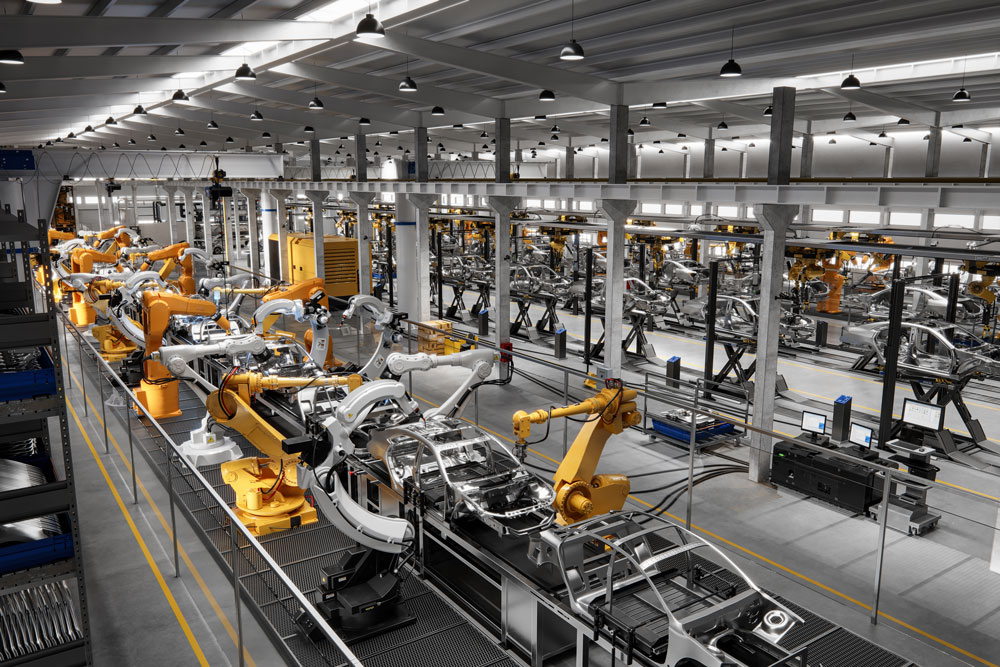
The Generation 3 Particle Pilot Plant at the National Solar Thermal Test Facility, which broke ground Feb. 16, is one of the most recent examples of Sandia working with industrial partners to clean up our climate. For years, Sandia has helped American industry become more efficient in converting raw materials to final products; this includes improving technologies, fuels and processes to extract the maximum energy possible and decrease unwanted byproducts.
“The emphasis on climate change is coming together with the need to address aging infrastructure across the country and an important way to advance both is to look at major energy users,” said Sarah Allendorf, director of Sandia’s Chemistry, Combustion and Materials Science Center. Sarah was director champion of the fiscal year 2022 Industrial Decarbonization strategic initiative that was sponsored by Sandia’s Energy and Homeland Security Portfolio.
In January, Sandia and its partners received funding from the Accelerating Carbon Capture and Storage Technologies initiative in the U.K. to develop 3D-printed low-carbon cement technologies — another part of the Labs’ efforts to tackle industrial decarbonization with the help of contributors from around the globe.
“Together, industrial and manufacturing activities produce almost a third of the nation’s greenhouse gas emissions,” said Abraham Ellis, who oversees Sandia’s Industrial Decarbonization program. “Many of those industrial processes are energy intensive and difficult to decarbonize. The strategic initiative identified key capabilities that can help address these challenging problems.”
Cement is one product of industrial processes that account for a lot of carbon in the atmosphere — an estimated 8% of global emissions. The strategic initiative team laid out four ways to approach large-scale industrial decarbonization: develop carbon-free feedstocks and chemical processes to reduce carbon dioxide emissions during processing; research alternative energy sources that don’t rely on oil or coal to supply heat and power; develop new ways to capture and sequester carbon with natural systems or in products; and recycle and recover products to use again, cutting down on production needs.
“Our strategic initiative looked at the ‘industry of today’ part and how we can help change their processes,” Sarah said. “I’m also curious about the ‘industry of tomorrow.’ How can we work with these industries to completely reimagine their processes? Could one of those approaches be deployed for immediate impact while in parallel one designs, from a completely clean sheet, a carbon-neutral steel company? For example, how would you build a steel plant if you intended to use hydrogen as a major energy carrier?”
In September, the DOE announced an effort called the Industrial Heat Shot, aimed at “dramatically reducing the cost, energy use and carbon emissions associated with the heat used to make everything from food to cement and steel.” The Biden administration hopes to achieve 85% lower greenhouse gas emissions from the industrial sector by 2035. Following this announcement, the DOE released its own Industrial Decarbonization Roadmap, which aligns with Sandia’s proposed outline. Sarah said that industrial decarbonization is a national priority that Sandia is well-positioned to address.
“Certainly, the role of hydrogen as an energy carrier was explored in this strategic initiative by the same people who think about hydrogen on a daily basis. We have an active program on everything from hydrogen production to materials used for safe storage. How might these play a deeper role in industry?” she said. “Another area of interest is sustainable aviation fuels. We have a deep history in biomanufacturing and bioproducts and using biological processes in concert with other industrial activities to lower the temperature of chemical reactions. Biology works at room temperature. You don’t need much energy to be at room temperature, so how can we make that work on an industrial scale?”
Abraham said taking decarbonization from research to solution will take quite a lot of work.
“Decarbonizing high-temperature industrial processes is especially challenging, and Sandia is investigating the applicability of alternatives such as concentrating solar thermal energy. For example, researchers at Sandia’s National Solar Thermal Test Facility have already conducted experiments to produce hydrogen, synthetic fuel and ammonia using concentrating solar thermal energy.”
“We’re going to continue exploring and pick some targeted demonstrations to move towards,” Sarah said. “Part of Sandia’s climate security strategy is harnessing concentrated solar power as a heat source for concrete or chemicals production. We’re moving these applications forward and I think the strategic initiative has been very helpful in getting a great baseline of understanding the state of the art, where the gaps are and who are the players. Working with our industry partners helps us really focus on what are the big gaps that keep them from deploying more advanced technologies or where the risk is too high. Then we can partner to address gaps or lower risks so they can make necessary changes.”
Sarah said there are even more questions that have not yet been asked — questions that will not only benefit the nation and the world but could give companies another reliable income stream to support their industrial decarbonization efforts.
“Think about how to get more value out of a manufacturing process,” she said. “Maybe there’s a waste stream, produced along the way, that you can convert to valuable products for a different business. So, it’s actually a net win in terms of energy use. Let’s imagine you have a process that generates a whole lot of carbon dioxide. Can you capture that carbon and somehow convert it into a product that is of value? That would make it a win-win-win.”